Growth mindset books are some my favourites — hard copy, soft copy, audiobook — I’ll take them all. And podcasts about growth mindset books — yes please!
What is a growth mindset?
A growth mindset is the belief you can change, grow and improve. The opposite, a fixed mindset, is the belief that we are who we are, that we can’t change, improve or develop new skills and talents. What an awful way to live.
Here’s a great video explaining the difference between a growth mindset and a fixed mindset:
My favourite growth mindset books
Book 1: Atomic Habits by James Clear
I have to admit that for a long time, I thought I didn’t need this book. Every time I walked into a bookstore, there they were, shining row upon row, surrounded by angelic golden light. I don’t know why I finally bought it, but I hopped online, downloaded the ebook and highlighted the heck out of it.
Right now, it’s the #1 book I’d recommend to anyone who wants to build better, stronger habits, and for people who want to break bad habits, which is probably everyone who has a growth mindset.
I have two favourite parts of Atomic Habits:
#1: James Clear states that to create a habit, make it easy. He also says to make it obvious, attractive and satisfying. It might sound like common sense, but it’s easy for us to make excuses, so instead, set yourself up for success and make it easy to carry out the habit. Get your workout clothes ready the night before, put fruit at eye level or put your treadmill where you’ll see it everyday.
Working from home means I struggle to walk a decent number of steps each day. Here’s what I did to build a better habit:
- Make it obvious: I set a daily step goal on my watch which means I can track my progress throughout the day. I also hired, then bought a treadmill and put it where I have to walk past it multiple times a day. It’s so obvious that I’m lucky when I don’t walk into it.
- Make it attractive: Walking on the treadmill is one of the few times I can actually “Netflix and chill”, so that ticks the attractive box.
- Make it easy: I bought a treadmill with simple features so I don’t have to overthink it. I turn it on, press start and walk. I also set my daily step goal to an achievable 7000 steps, not 10,000.
- Make it satisfying: I always feel great after a walk and who doesn’t love ticking something off their list?
#2: Atomic Habits is not about big habits. It’s not about making sweeping changes, it’s about how small steps can create massive change. Being able to do ten push ups is not about doing ten push ups. It’s about doing one push up, telling yourself that you are the type of person who does push ups, and continuing to improve on that. One push up today, two push ups tomorrow.

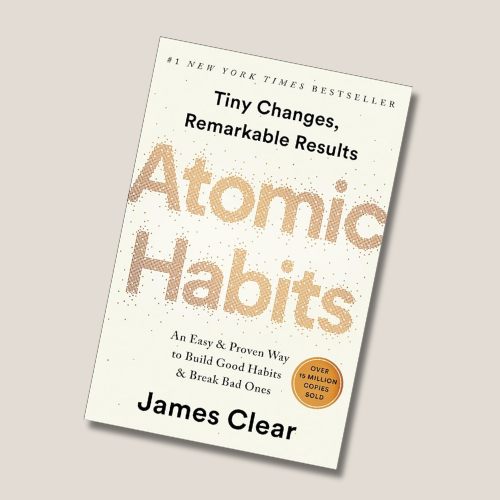
Book 2: The 7 Habits of Highly Effective People
This is an oldie, but a goodie. The 7 Habits of Highly Effective People was published way back in 1989 when shoulder pads were in, Tina Turner was simply the best and I was just a tiny tot in primary school. But alas, it was ten years later that I picked up the 7 Habits on a plane heading to Darwin.
The 7 Habits of Highly Effective People by the late Dr Stephen R Covey sold over 25 million copies worldwide and Atomic Habits has sold over 20 million worldwide, so they’re both up there in terms of global success.
The 7 Habits are great ones:
Be proactive; begin with the end in mind; put first things first; think win-win; seek first to understand, then to be understood; and synergise.
The concept from the 7 Habits that had the most influence on my life was the circle of influence and the circle of concern, and how we should focus our thoughts and energy on the things we can control. We can’t control the weather, but we can control our attitude. We can’t control our genetics, but we can control if we choose to exercise. Understanding this concept can lead to more happiness, more contentment and more success in what matters most to you.

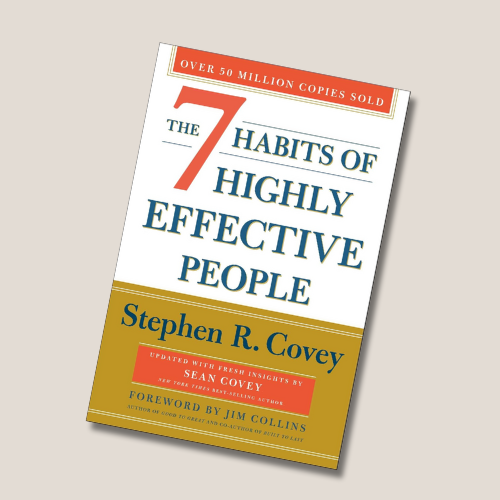
Book 3: The Subtle Art of Not Giving a F*ck by Mark Manson
Again, another great book that I almost missed because I thought I didn’t need it. With its bright orange cover and F*ck emblazoned across the front, it’s a hard book to miss on the bestseller shelves… plus, Mark Manson has sold over 15 million copies of The Subtle Art of Not Giving a F*ck, so the world says — it’s not bad 😉
The Subtle Art of Not Giving a F*ck was published back in 2016 but I didn’t pick up a copy until I found it at an AirBnB a couple of years ago.
Not bad, not bad, I thought.
My favourite aspects of The Subtle Art of not Giving a F*ck are:
- If we care about everything, it makes it hard to care about what really matters.
- It’s about choosing what matters to you, which is a choice we make all day, every day.
- We are “constantly bombarded with messages to give a f*ck about everything, all the time… the problem is that giving too many f*cks is bad for your mental health… The key to a good life is not giving a f*ck about more; it’s giving a f*ck about less, giving a f*ck about only what is true and immediate and important.”
- Choose your struggle: “what is the pain you want to sustain?” “Who you are is defined by what you’re willing to struggle for. People who enjoy the struggles of a gym are the ones who run triathlons and have chiseled abs and can bench-press a small house…” “Learn to sustain the pain you’ve chosen… Relish it. Savor it. Welcome it with open arms. Then act despite it.”
- Failure: “improvement at anything is based on thousands of tiny failures, and the magnitude of your success is based on how many times you’ve failed at something.”
- Motivation: “Action isn’t just the effect of motivation; it’s also the cause of it.” “Action -> Inspiration -> Motivation.”
- Do something: “If we follow the “do something” principle, failure feels unimportant. When the standard of success becomes merely acting — when any result is regarded as progress and important, when inspiration is seen as a reward rather than a prerequisite — we propel ourselves ahead. We feel free to fail, and that failure moves us forward.”
- “That ‘something’ can be the smallest viable action toward something else. It can be anything.”

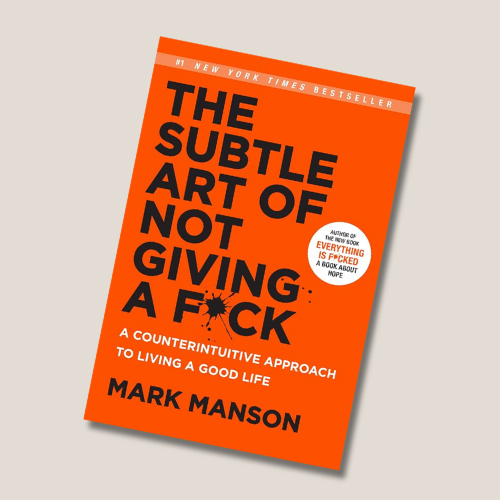
Book 4: 9 Things Successful People Do Differently by Heidi Grant Halvorson
There are four things I love about this book. The first is that it’s tiny. If you don’t like reading or you have trouble focusing, this is the perfect growth mindset book for you. It fits in the palm of your hand and it’s super short.
The second, is that 9 Things Success People Do Differently was published by Harvard and written by a female social psychologist who graduated from Columbia University. Dr Heidi Grant is known for her research and knowledge about leadership and motivation, sharing her expertise with the world as well as household names including Spotify, Microsoft, Google, TED and 3M.
The third aspect I love about the 9 Things Successful People Do Different is that Dr Grant worked on her PHD with Dr Carol Dweck, author of Mindset and the psychologist who coined the term “growth mindset”, so you can feel confident that this concise book is dishing out the goods.
The fourth aspect I love about this growth mindset book is that it really does dish out the goods. Every chapter, every page, every line. If you’re looking for a bite-sized book about motivation or success, this is the book for you. To get you started, here’s Dr Grant’s summary of 9 Things Successful People Do Differently.
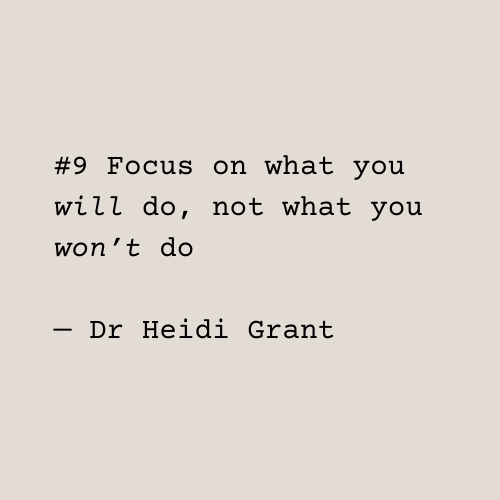
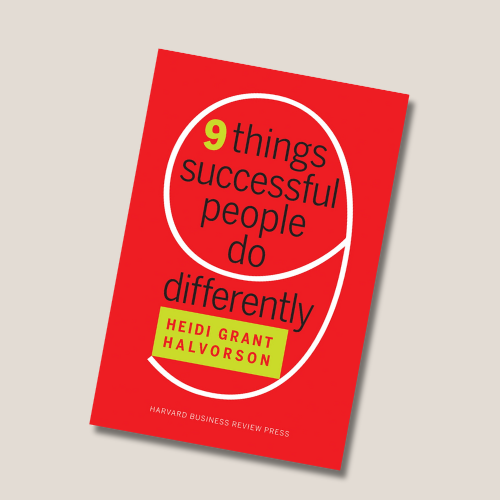
Book 5: The Miracle Morning by Hal Elrod
Although each of these books has had a profound impact on me (and the world) it’s The Miracle Morning that plays a role in my life each day.
The Miracle Morning was published in 2016 and updated in 2023. The book was written by Hal Elrod, a man who died and CAME BACK FROM THE DEAD. After being struck by a drunk driver, Hal stopped breathing and his heart stopped beating. He broke 11 bones, was told he would probably never walk again and was left with a permanent brain injury. Three weeks later, he took his first step. There is much more to Hal’s story, which you can read at halelrod.com.
The Miracle Morning SAVERS
Hal’s book, The Miracle Morning includes “The 6 habits that will transform your life before 8am”. These 6 habits are “SAVERS”: silence, affirmations, visualisation, exercise, reading and scribing. Each of these habits will set you up for a more intentional day, with more focus and motivation, and the best part — they’re easy to put into action.
In a nutshell:
- Silence = meditation
- Affirmations = a specific way of writing and reflecting on your goals
- Visualisation = visualising yourself living in line with your affirmations
- Exercise = stretching, or a full workout, whatever works for you
- Reading = reading for 10-30 minutes, but even one minute helps
- Scribing = writing, journaling — a way to reflect, capture ideas, express gratitude
It doesn’t matter what order you do the SAVERS — Hal says to find a way that works for you. Don’t have 60 minutes in the morning? No worries, do it in 6 — take a minute for each of the SAVERS and you’ll still have a more intentional day.
I have my SAVERS where I’ll see them every day and although I have a long way to go with reaching my goals, SAVERS keeps me focused on getting there.

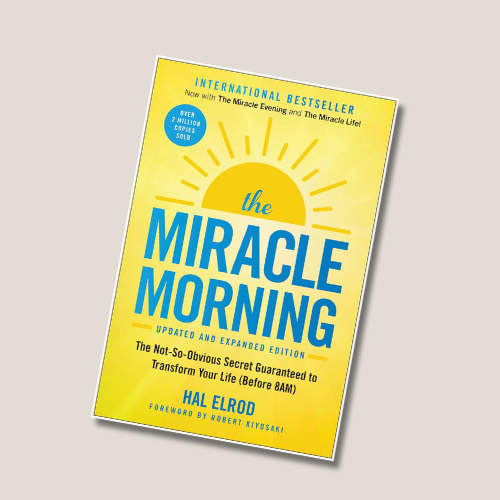
Now, in the words of Hal Elrod, “…stop reading and start creating. Never settle. Create the life you deserve to live, and help others do the same.”
Further reading:
Not into reading? Check out these growth mindset books on Audible, Spotify or Apple.

0 Comments